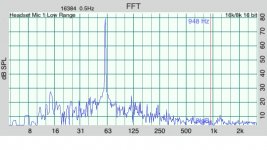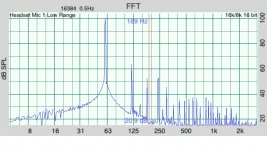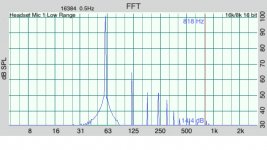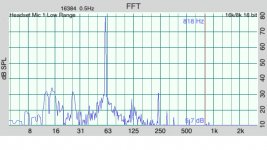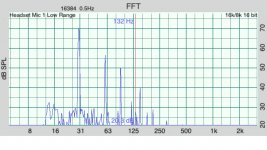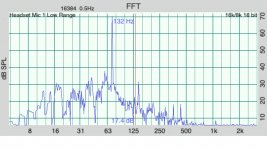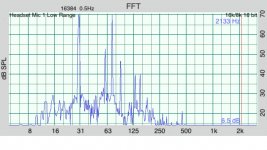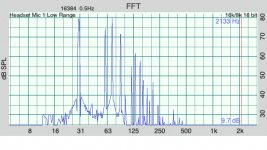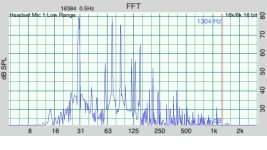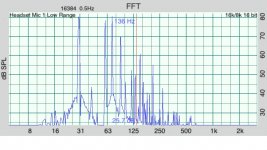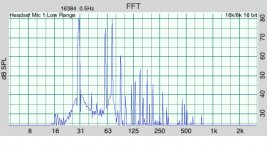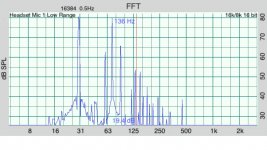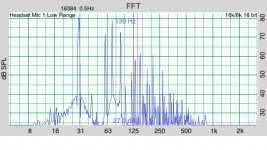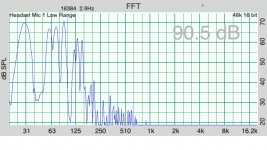Next is the SB in the 85 liter 38hz alignment.
This gives a peaky response so I didn't do too much subjective listening in this setup but carried out measurements to see how well it drives the port. This drivers has a lot of clean output at 63hz and is pushing the limits of my testing setup. I pushed to 115 db and my microphone was clipping.
Here's the max spl at 5% distortion measurements:
Frequency Spl of fundamental 2nd harmonic 3rd harmonic
16 59 -39 -20
20 69 -37 -25
25 84 -28 -25
31.5 90 -25 -32
40 93 -24 -41
50 110 -24 -25
63 112 -30 -45
attached is 60hz @80db and 100 db
This gives a peaky response so I didn't do too much subjective listening in this setup but carried out measurements to see how well it drives the port. This drivers has a lot of clean output at 63hz and is pushing the limits of my testing setup. I pushed to 115 db and my microphone was clipping.
Here's the max spl at 5% distortion measurements:
Frequency Spl of fundamental 2nd harmonic 3rd harmonic
16 59 -39 -20
20 69 -37 -25
25 84 -28 -25
31.5 90 -25 -32
40 93 -24 -41
50 110 -24 -25
63 112 -30 -45
attached is 60hz @80db and 100 db
Attachments
Whats distortion sound like?
I wonder if this test was done in a qw length shape, as well? you can quickly adjust it to suit any drivers TS parameters by sleeving three pieces of 12” son@tube(length of 120,240and 360cm is 75-25hz and no driver will use more than its Sd in a pipe thats 750cm2. Much less, So you can stick solid wood into the pipe to optimize for Vas/Qes and the Fs quick with several 4x4 and/or 2x4 in standard lengths of 10’ ?
I wonder if this test was done in a qw length shape, as well? you can quickly adjust it to suit any drivers TS parameters by sleeving three pieces of 12” son@tube(length of 120,240and 360cm is 75-25hz and no driver will use more than its Sd in a pipe thats 750cm2. Much less, So you can stick solid wood into the pipe to optimize for Vas/Qes and the Fs quick with several 4x4 and/or 2x4 in standard lengths of 10’ ?
Booger, You can listen to yourself what distortion of a sine wave sounds like here: THD - The Extended Set (62Hz)
However when listening to music with say content say in the 30hz range the driver with less distortion will sound more massive or deeper. That's because your ear is more sensitive to the 60hz 2nd harmonic and 90hz 3rd harmonic so those harmonics will dominate to you ear as excursion increases and distortion levels rise and the low 30hz tone gets lost in the mix.
You transmission line experiment seems interesting but with a long tube like that wouldn't the pipe resonance be pretty strong? I guess that's why stuffing is used?
However when listening to music with say content say in the 30hz range the driver with less distortion will sound more massive or deeper. That's because your ear is more sensitive to the 60hz 2nd harmonic and 90hz 3rd harmonic so those harmonics will dominate to you ear as excursion increases and distortion levels rise and the low 30hz tone gets lost in the mix.
You transmission line experiment seems interesting but with a long tube like that wouldn't the pipe resonance be pretty strong? I guess that's why stuffing is used?
Booger, You can listen to yourself what distortion of a sine wave sounds like here: THD - The Extended Set (62Hz)
However when listening to music with say content say in the 30hz range the driver with less distortion will sound more massive or deeper. That's because your ear is more sensitive to the 60hz 2nd harmonic and 90hz 3rd harmonic so those harmonics will dominate to you ear as excursion increases and distortion levels rise and the low 30hz tone gets lost in the mix.
You transmission line experiment seems interesting but with a long tube like that wouldn't the pipe resonance be pretty strong? I guess that's why stuffing is used?
Yeah, its a strange situation. In fact, if we folded the pipe at ~90-95cm segments and place the driver entry at the first fold we shuffle around on the 30/60/90/120 hz in an interesting way. Damping and a venturi shape to seperate at the ‘mid’ point, a pipe with two transducer entries of polar opposites, in rarification/pressurization for example.
I continue to be impressed by the clean sound of the SB Acoustics SB34NRXL75-8. This test is with the passive radiator in 85 liters for a 17.4hz tune.
One thing I started doing is creating a playlist of songs that certain drivers sound particularly well on. I generally play Steely Dan's album Aja through all the drivers as I feel it's well recorded. I started adding some songs from this album to my "SB" playlist and after adding a few songs I realized that the whole album should be included! I know subjective impressions don't mean much to some, but my SB playlist has the most songs on it.
I've been trying to understand what features make this driver sound good. The IMD distortion is low so I believe that the shorting rings and undercut pole piece have been used effectively. Also this driver has the biggest pole vent I've seen, air trapped inside the voice coil may be more of an issue than we care to admit and the big pole vent helps with that.
Once again the 63 hz test is pushing the limits of my microphone.
Here's the max spl at 5% distortion measurements:
Frequency Spl of fundamental 2nd harmonic 3rd harmonic
16 74 -23 -39
20 85 -28 -24
25 81 -26 -25
31.5 62 -22 -35
40 90 -24 -35
50 106 -25 -23
63 112 -31 -41
attached is 60hz @80db and 100 db
One thing I started doing is creating a playlist of songs that certain drivers sound particularly well on. I generally play Steely Dan's album Aja through all the drivers as I feel it's well recorded. I started adding some songs from this album to my "SB" playlist and after adding a few songs I realized that the whole album should be included! I know subjective impressions don't mean much to some, but my SB playlist has the most songs on it.
I've been trying to understand what features make this driver sound good. The IMD distortion is low so I believe that the shorting rings and undercut pole piece have been used effectively. Also this driver has the biggest pole vent I've seen, air trapped inside the voice coil may be more of an issue than we care to admit and the big pole vent helps with that.
Once again the 63 hz test is pushing the limits of my microphone.
Here's the max spl at 5% distortion measurements:
Frequency Spl of fundamental 2nd harmonic 3rd harmonic
16 74 -23 -39
20 85 -28 -24
25 81 -26 -25
31.5 62 -22 -35
40 90 -24 -35
50 106 -25 -23
63 112 -31 -41
attached is 60hz @80db and 100 db
Attachments
Well then Its seems it might be very interesting to listen to the dayton rss265ho4 in a 14x14x14 inch box with 2-3” thick of standard wall fiberglass on 4 interior panels.
And then Also, mounted in a pipe end that fires into a 90-100cm closed end and but inline also as a folded version of that twice as long which exits at the driver location which is slightly enclosed to ensure they share some sort of ‘tap’ as the point of reference?
Basically hovering around that 30/60/90 and 120 hz region.
So what happens at 30/60/90/120 as played through a tone generator?
And then Also, mounted in a pipe end that fires into a 90-100cm closed end and but inline also as a folded version of that twice as long which exits at the driver location which is slightly enclosed to ensure they share some sort of ‘tap’ as the point of reference?
Basically hovering around that 30/60/90 and 120 hz region.
So what happens at 30/60/90/120 as played through a tone generator?
Next up is the SEAS L26ROY 10" X1001-04. This test is in the 85liter sealed box. This is a fun driver to test with the music cranked up excursion gets pretty high. This driver is loud and clean in what I would call the hiphop bass region something like 35-60hz. The song Better by Khalid had my listening chair shaking at 7 feet away.
For the upper bass 80-120hz crossover region other drivers such as the SB handle this better, so I still retain my opinion that the SB is better for jazz bluegrass and music with string bass.
I has some discussions with SEAS and here on DIYaudio to try and figure out which SEAS L26 model to test as there are 2 layer and 4 layer voice coil versions. SEAS responded that the 2 layer voice coil has overall lower THD so that's what I went with.
Here's the max spl at 5% distortion measurements:
Frequency Spl of fundamental 2nd harmonic 3rd harmonic
16 68 -26 -23
20 65 -41 -25
25 66 -32 -23
31.5 76 -30 -24
40 98 -25 -30
50 110 -26 -28
63 112 -26 -45
attached is 60hz @80db and 100 db
For the upper bass 80-120hz crossover region other drivers such as the SB handle this better, so I still retain my opinion that the SB is better for jazz bluegrass and music with string bass.
I has some discussions with SEAS and here on DIYaudio to try and figure out which SEAS L26 model to test as there are 2 layer and 4 layer voice coil versions. SEAS responded that the 2 layer voice coil has overall lower THD so that's what I went with.
Here's the max spl at 5% distortion measurements:
Frequency Spl of fundamental 2nd harmonic 3rd harmonic
16 68 -26 -23
20 65 -41 -25
25 66 -32 -23
31.5 76 -30 -24
40 98 -25 -30
50 110 -26 -28
63 112 -26 -45
attached is 60hz @80db and 100 db
Attachments
Last edited:
Next up is the Seas l26 in 85liters 38hz ported.
Tons of output in the 40hz range, however to me the group delay was noticeable around tuning as with almost all drivers I prefer this driver in the sealed or passive radiator alignments.
I made a mistake on the 63 hz reading and forgot to capture the 3rd harmonic since the scale was set for 50-110db and the 3rd harmonic was below 50db. In other words very clean sound at 50 and 63hz because the 3rd harmonic is way down.
Here's the max spl at 5% distortion measurements:
Frequency Spl of fundamental 2nd harmonic 3rd harmonic
16 54 -29 -20
20 66 -47 -23
25 85 -41 -25
31.5 94 -24 -25
40 105 -29 -26
50 112 -26 -34
63 110 -24 more than -60 db down
attached is 60hz @80db and 100 db
Tons of output in the 40hz range, however to me the group delay was noticeable around tuning as with almost all drivers I prefer this driver in the sealed or passive radiator alignments.
I made a mistake on the 63 hz reading and forgot to capture the 3rd harmonic since the scale was set for 50-110db and the 3rd harmonic was below 50db. In other words very clean sound at 50 and 63hz because the 3rd harmonic is way down.
Here's the max spl at 5% distortion measurements:
Frequency Spl of fundamental 2nd harmonic 3rd harmonic
16 54 -29 -20
20 66 -47 -23
25 85 -41 -25
31.5 94 -24 -25
40 105 -29 -26
50 112 -26 -34
63 110 -24 more than -60 db down
attached is 60hz @80db and 100 db
Attachments
Now the seas l26 in the 85 liter 17hz passive radiator tune.
It not really a fair competition a 10" driver in a sea of 12s.
One thing I noticed about the sound is that with a song with loud and deep bass it seems this sub is still recovering for the long excursions required when the next note comes along. So Seas if you are listening maybe a 12" should be in the works.
Here's the max spl at 5% distortion measurements:
Frequency Spl of fundamental 2nd harmonic 3rd harmonic
16 68 -26 -27
20 84 -38 -27
25 78 -35 -24
31.5 65 -28 -25
40 99 -25 -29
50 110 -27 -27
63 112 -26 -40
attached is 60hz @80db and 100 db
It not really a fair competition a 10" driver in a sea of 12s.
One thing I noticed about the sound is that with a song with loud and deep bass it seems this sub is still recovering for the long excursions required when the next note comes along. So Seas if you are listening maybe a 12" should be in the works.
Here's the max spl at 5% distortion measurements:
Frequency Spl of fundamental 2nd harmonic 3rd harmonic
16 68 -26 -27
20 84 -38 -27
25 78 -35 -24
31.5 65 -28 -25
40 99 -25 -29
50 110 -27 -27
63 112 -26 -40
attached is 60hz @80db and 100 db
Attachments
The next few posts are a study in Intermodulation Distortion (IMD).
IMD is a test done with two or more tones and when played through a speaker it will produce tones that are non harmonically related to the signal. I feel IMD tests are a more real world test that will mimic how a speaker responds to music more so than a standard harmonic distortion test.
For the IMD test I choose tones at 30hz and 72hz. These tones do not share any harmonics, which is important so that there is no cancellation of distortion products.
First let's look at the 30hz.jpg a SB34NRXL75-8 playing a 30hz tone at 70db. We see harmonic distortion products at 60hz and 90hz and some higher order distortion as well. Then look at the 72hz.jpg a single tone at 72hz we see harmonic distortion at 144hz and then most everything else is at the noise floor.
Next take a look at the SB30&72hzIMD.jpg this is two tones at 30hz and 72hz playing at once. The harmonics from the previous 30 and 72hz single tones are still present as well as a spike at 132 hz. This 132hz tone will stick out to ear as something that is not right or not musical. However, you will see in the next post that this is one of the better results.
Based on some IMD calculators there are other IMD products that will be produced but after testing a few drivers with these tones the 132hz spike is the most prominent one so I will focus on this.
IMD is a test done with two or more tones and when played through a speaker it will produce tones that are non harmonically related to the signal. I feel IMD tests are a more real world test that will mimic how a speaker responds to music more so than a standard harmonic distortion test.
For the IMD test I choose tones at 30hz and 72hz. These tones do not share any harmonics, which is important so that there is no cancellation of distortion products.
First let's look at the 30hz.jpg a SB34NRXL75-8 playing a 30hz tone at 70db. We see harmonic distortion products at 60hz and 90hz and some higher order distortion as well. Then look at the 72hz.jpg a single tone at 72hz we see harmonic distortion at 144hz and then most everything else is at the noise floor.
Next take a look at the SB30&72hzIMD.jpg this is two tones at 30hz and 72hz playing at once. The harmonics from the previous 30 and 72hz single tones are still present as well as a spike at 132 hz. This 132hz tone will stick out to ear as something that is not right or not musical. However, you will see in the next post that this is one of the better results.
Based on some IMD calculators there are other IMD products that will be produced but after testing a few drivers with these tones the 132hz spike is the most prominent one so I will focus on this.
Attachments
Sealed box 70db IMD comparison
Here is a compilation of IMD results for all drivers I was able to test.
Same as the harmonic distortion tests this is an in room measurement 4 feet from the speaker, the room definitely effects the results, but as the speakers see the same measurement conditions comparisons can be made.
The test is a 30hz and 72hz tone with all drivers in a 85 liter sealed box. I will list the drivers from best to worst with the level of the 132hz IMD product below 70db
Peerless XXLS 830842 -44
Acoustic Elegance SBP-12a -36
SEAS L26-X1001-04 -35
Audio Technology Flexunits 12 B 77 25 10 -35
B&C 12FG100-4 -32
SB SB34NRXL75-8 -31
Wavecor SW312WA03-01 -28
Eminence Lab 12c -25
Radio Shack 40-1350 12" DVC -22
DIYSG Magnum -15
GRS 12SW-4 -8
IMD graphs attached
If you read articles such as the Klippel causes of distortion you will find the drivers with a minimum change in inductance vs excursion will have the least IMD distortion. This is seen in my results as the Audio technology and Acoustic Elegance have shorting sleeves to linearize the inductance over excursion and as far as I know the Radio shack and GRS do not have shorting rings or sleeves.
From my listening tests I found that the drivers that did well in this IMD test are the same drivers that sound well as the music gets complex and there is a lot of simultaneous low frequency energy.
The peerless xxls was the surprise winner, especially considering that it is only a 10" driver. The aluminum shorting ring and aluminum spacer on the pole piece have been put to good use. After that a pretty close 2nd place. Let's see what happens if we bump up the level to 80db.....
Here is a compilation of IMD results for all drivers I was able to test.
Same as the harmonic distortion tests this is an in room measurement 4 feet from the speaker, the room definitely effects the results, but as the speakers see the same measurement conditions comparisons can be made.
The test is a 30hz and 72hz tone with all drivers in a 85 liter sealed box. I will list the drivers from best to worst with the level of the 132hz IMD product below 70db
Peerless XXLS 830842 -44
Acoustic Elegance SBP-12a -36
SEAS L26-X1001-04 -35
Audio Technology Flexunits 12 B 77 25 10 -35
B&C 12FG100-4 -32
SB SB34NRXL75-8 -31
Wavecor SW312WA03-01 -28
Eminence Lab 12c -25
Radio Shack 40-1350 12" DVC -22
DIYSG Magnum -15
GRS 12SW-4 -8
IMD graphs attached
If you read articles such as the Klippel causes of distortion you will find the drivers with a minimum change in inductance vs excursion will have the least IMD distortion. This is seen in my results as the Audio technology and Acoustic Elegance have shorting sleeves to linearize the inductance over excursion and as far as I know the Radio shack and GRS do not have shorting rings or sleeves.
From my listening tests I found that the drivers that did well in this IMD test are the same drivers that sound well as the music gets complex and there is a lot of simultaneous low frequency energy.
The peerless xxls was the surprise winner, especially considering that it is only a 10" driver. The aluminum shorting ring and aluminum spacer on the pole piece have been put to good use. After that a pretty close 2nd place. Let's see what happens if we bump up the level to 80db.....
Attachments
-
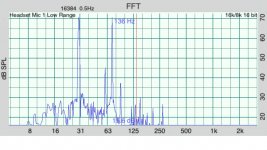 XXLS30&72IMD.JPG149.7 KB · Views: 92
XXLS30&72IMD.JPG149.7 KB · Views: 92 -
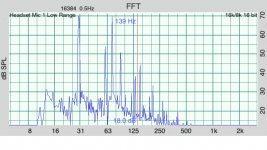 B&C30&72hzIMD.JPG158.9 KB · Views: 74
B&C30&72hzIMD.JPG158.9 KB · Views: 74 -
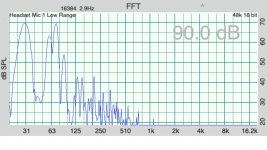 Wavecor30&72hzIMD.JPG152.3 KB · Views: 86
Wavecor30&72hzIMD.JPG152.3 KB · Views: 86 -
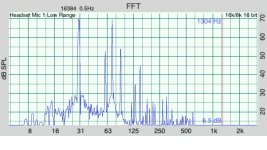 L2630&72hzIMD.JPG164.4 KB · Views: 65
L2630&72hzIMD.JPG164.4 KB · Views: 65 -
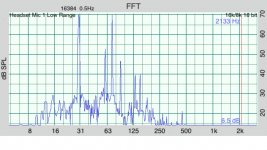 SB30&72hzIMD.JPG157.5 KB · Views: 85
SB30&72hzIMD.JPG157.5 KB · Views: 85 -
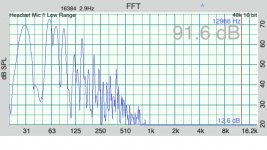 RS30&72hzIMD.JPG155.6 KB · Views: 380
RS30&72hzIMD.JPG155.6 KB · Views: 380 -
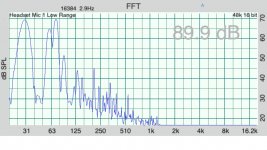 Lab30&72hzIMD.JPG151.9 KB · Views: 370
Lab30&72hzIMD.JPG151.9 KB · Views: 370 -
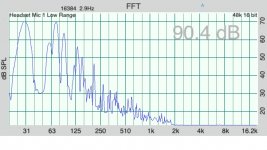 Magnum30&72hzIMD.JPG133.5 KB · Views: 367
Magnum30&72hzIMD.JPG133.5 KB · Views: 367 -
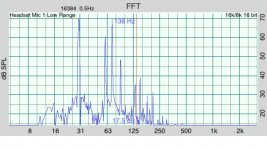 AT30&72hzIMD.JPG150.1 KB · Views: 370
AT30&72hzIMD.JPG150.1 KB · Views: 370 -
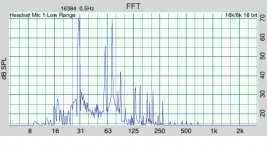 AE30&72hzIMD.JPG150.2 KB · Views: 389
AE30&72hzIMD.JPG150.2 KB · Views: 389
Sealed box 80db IMD comparison
Ok now for the same IMD test but bumping up the level to 80db. Some of the drivers didn't make it this far. My metric was to stop the test when the harmonic distortion overcame the level of the fundamental. With 9 feet ceilings I 'm getting a boost at 61hz so the 2nd harmonic at 60hz comes in higher than it would in an anechoic chamber.
Here's the results of the 30hz and 72hz IMD test at 80db in db below the fundamental
Acoustic Elegance SBP-12a -34
Audio Technology Flexunits 12 B 77 25 10 -30
Peerless XXLS 830842 -26
SEAS L26-X1001-04 -24
B&C 12FG100-4 -22
SB SB34NRXL75-8 -18
IMD graphs attached
As you can see the advantage of the greater cone area is seen here as the 10" XXLS are SEAS are losing position.
Ok now for the same IMD test but bumping up the level to 80db. Some of the drivers didn't make it this far. My metric was to stop the test when the harmonic distortion overcame the level of the fundamental. With 9 feet ceilings I 'm getting a boost at 61hz so the 2nd harmonic at 60hz comes in higher than it would in an anechoic chamber.
Here's the results of the 30hz and 72hz IMD test at 80db in db below the fundamental
Acoustic Elegance SBP-12a -34
Audio Technology Flexunits 12 B 77 25 10 -30
Peerless XXLS 830842 -26
SEAS L26-X1001-04 -24
B&C 12FG100-4 -22
SB SB34NRXL75-8 -18
IMD graphs attached
As you can see the advantage of the greater cone area is seen here as the 10" XXLS are SEAS are losing position.
Attachments
It's great to see some interest in this. I was wondering why you didn't measure near field, as this will reduce the interaction with the room. You can still set the SPL level at one meter with a separate decibel meter. Also, your charts are not labelled so we are not able to make much use of them. Copper shorting rings/sleeves seem to correlate to the high performers. That has been my experience as well with both objective and subjective evaluation.
Joseph, thanks for your feedback. I didn't measure near field because I think it would cause my microphone to clip. If you hover over the picture and look at the file name the abbreviation of the driver is there. From left to right in the 80db test.
XXLS is the peerless 10"
AE is acoustic elegance
AT is audio technology
L26 is the Seas
SB is the sb acoustics sb34nrxl75- 8
XXLS is the peerless 10"
AE is acoustic elegance
AT is audio technology
L26 is the Seas
SB is the sb acoustics sb34nrxl75- 8
Keeping up with the thread namesake next up is another $15 sub, this time a little more modern. This is an open box GRS 12SW-4 a budget 12" sub from Parts Express.
With a Qts of .98 this alignment would be in a textbook of how not to design a vented box, however using the eq on my plate amp I was able to get decent sound out of this. Doesn't have the upper bass detail or slam of others but you can get decent spl.
In fact you can squeeze 5db more output at 31.5hz than a single dayton rs 12 sealed albeit using the leverage of the port.
Here's the distortion measurements:
Frequency Spl of fundamental 2nd harmonic 3rd harmonic
16 56 -36 -20
20 69 -32 -28
25 79 -38 -24
31.5 85 -26 -53
40 92 -23 -26
50 101 -31 -25
63 110 -26 -37
attached is 60hz @80db and 100 db
Try running two of these in isoberic configuration.
The GRS sub is good for the price. But the IMD distortion is telling that as the music gets complex and loud the distortion gets high. Attached is the IMD distortion of the GRS playing 30hz and 72hz at once at 70db. I noticed this with listening some songs sounding clean but others muddy. Having multiple subs cuts down on distortion to some extent and isobaric would cut down even order distortion.
I see some people are using these outdoors as patio subs. With a poly cone and rubber surround this would be a fun application.
I see some people are using these outdoors as patio subs. With a poly cone and rubber surround this would be a fun application.
Attachments
Last edited:
So, I noticed you didn't have the Dayton RS data in the final spreadsheet format.
I am currently purchasing 8" subs to go in a three-way cabinet I'm building and due to price considerations (I'm building 2 pair, so 4 subs, plus SEAS U18RNXs plus some Peerless DA25XT00 tweeters), I'm currently narrowed down to either the Dayton Audio RSS210HO-8 8Ohm and the SB SB23MFCL45-8. I'm using an integrated amp with active crossover and dsp (1701 chip), which you can use REW with SigmaStudio to autoEQ the speakers for a flat response. The amp is 6 Ohm in the documentation, so 8 Ohm is kind of required.
Anyways, even though you did not test 8 inch subs, I did want your opinion of the SB versus the Dayton RSS subs you have used, especially regarding distortion.
Thanks.
I am currently purchasing 8" subs to go in a three-way cabinet I'm building and due to price considerations (I'm building 2 pair, so 4 subs, plus SEAS U18RNXs plus some Peerless DA25XT00 tweeters), I'm currently narrowed down to either the Dayton Audio RSS210HO-8 8Ohm and the SB SB23MFCL45-8. I'm using an integrated amp with active crossover and dsp (1701 chip), which you can use REW with SigmaStudio to autoEQ the speakers for a flat response. The amp is 6 Ohm in the documentation, so 8 Ohm is kind of required.
Anyways, even though you did not test 8 inch subs, I did want your opinion of the SB versus the Dayton RSS subs you have used, especially regarding distortion.
Thanks.
- Home
- Loudspeakers
- Subwoofers
- A tale of 12" subwoofers, distortion and 15 dollars.
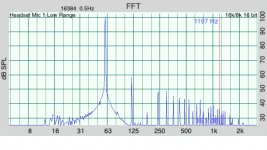
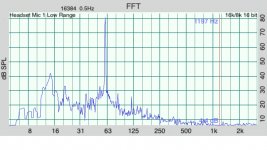
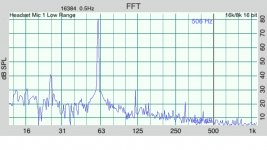
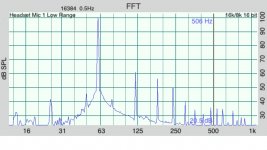
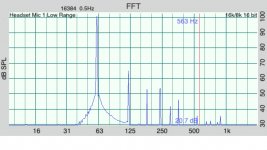
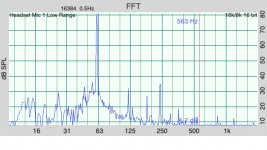
![IMG_2677[1].jpg](/community/data/attachments/838/838060-aaf66f439698aa50542a72ad5d15863c.jpg)
